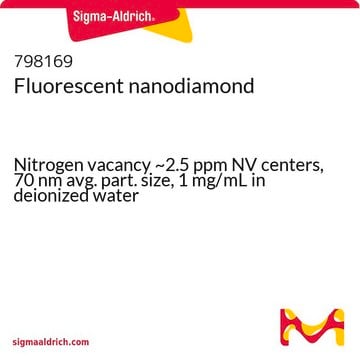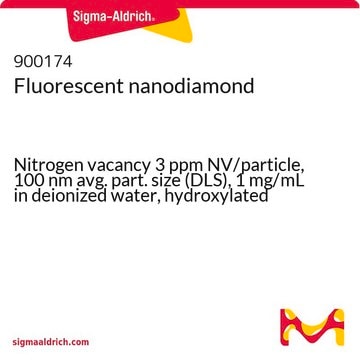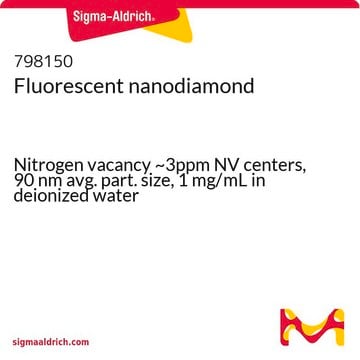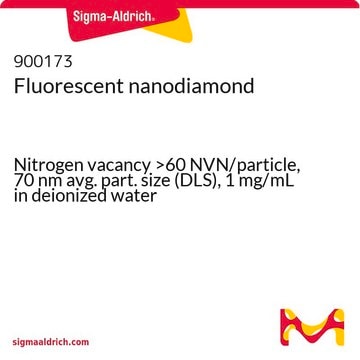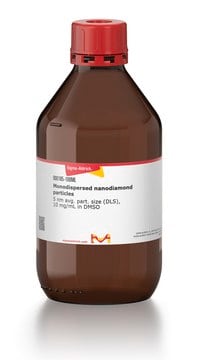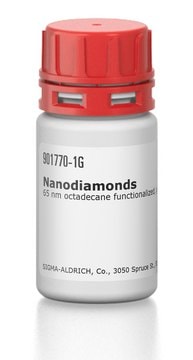Please see the image below to review the spectral data for this product.
推荐产品
正在寻找类似产品? 访问 产品对比指南
一般描述
储存分类代码
10 - Combustible liquids
WGK
nwg
闪点(°F)
Not applicable
闪点(°C)
Not applicable
其他客户在看
商品
荧光纳米金刚石颗粒(FND)- 发现纳米金刚石颗粒的属性和应用。
Fluorescent Nanodiamond Particles (FNDs)- Find properties and applications of nanodiamond particles.
Fluorescent Nanodiamonds and biofunctionalization strategies are detailed for imaging and bioconjugation applications.
Biomaterials science integrates smart materials into biological research, requiring a deep understanding of biological systems.
-
I would like to see the fluorescence response of 798088
1 answer -
1. Is your inflorescence nanodiamond dyed?
2. What are the excitation and emission wavelengths for them? are their quantum yield and brightness information available?
3. What is the function of the PEG functionalization here? Does it reduce surface tension? Does the functional group affect the fluorescent intensity?
4. Has it been used for some fluorescent tracing experiments?1 answer-
1 The fluorescence originates from the nanodiamonds centers, such as nitrogen-vacancy (NV), NVN, or N3, and not from any fluorescent groups. Therefore, it is not dyed.
2 The excitation/emission wavelengths are consistent for these products and are based on the nanodiamonds center. The catalog part numbers, center type, excitation peak, emission peak, and brightness information are as follows:
900173, NVN, 480 nm, 520 nm (green), ~90x vs FITC
All other products, NV, 570 nm, 680 nm (red), ~70x brighter vs Atto 647 Two important notes provided were:
Green fluorescence is brighter than red.
Longer wavelengths, such as red light, have better penetrability.
3 PEG functionalization historically reduces non-specific binding and aggregation in buffered media. Carboxylated particles are commonly used for sensing and imaging applications, or to conduct further syntheses in the lab. However, in biological media/buffer (e.g., PBS), they are prone to aggregation, and surface coatings help to reduce this. Moreover, other functionalizations, such as biotin or antibodies, allow for selective targeting.
4 Threr is information available that it has been used in fluorescent imaging experiments.Helpful?
-
Active Filters
我们的科学家团队拥有各种研究领域经验,包括生命科学、材料科学、化学合成、色谱、分析及许多其他领域.
联系客户支持
